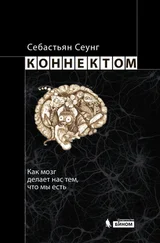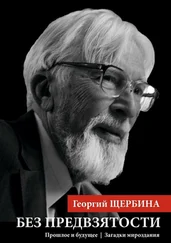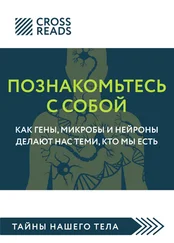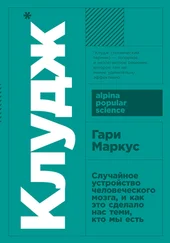A. R. Damasio, «The somatic marker hypothesis and the possible functions of the prefrontal cortex», «Philosophical Transactions of the Royal Society of London Series B: Biological Sciences» 351 (1996): 1413–1420.
B. D. Dunn, T. Dalgleish, and A. D. Lawrence, «The somatic marker hypothesis: A critical evaluation», «Neuroscience & Biobehavioral Reviews» 30 (2006): 239–271.
Joseph E. LeDoux, «The Emotional Brain: The Mysterious Underpinnings of Emotional Life» (New York: Simon & Schuster, 1996).
Даниэль Канеман. Думай медленно… решай быстро / пер. Школа перевода Баканова. (М.: АСТ, 2014).
В статье, опубликованной в 1978 году в журнале «Journal of the American Medical Association» (27: 141–162), Мирон Шоненфельд (Myron Schonenfeld) предположил, что у Паганини, скорее всего, был синдром Марфана, редкое генетическое расстройство.
Цит. по: A. Pedrazzini, A. Martelli, and S. Tocco, «Niccolò Paganini: The hands of a genius», «Acta Biomedica» 86 (2015): 27–31.
Carl Guhr, «Paganini’s Art of Playing the Violin: With a Treatise on Single and Double Harmonic Notes» , translated by S. Novello (London: Novello & Co., 1915).
W. K. Bühler, «Gauss: A Biographical Study» (New York: Springer, 1981).
George Lakoff and Rafael E. Núñez, «Where Mathematics Comes From: How the Embodied Mind Brings Mathematics into Being» (New York: Basic Books, 2000).
A. D. Wilson and S. Golonka, «Embodied cognition is not what you think it is», «Frontiers in Psychology» 4 (2013): 58.
L. M. Gordon et al., «Dental materials: Amorphous intergranular phases control the properties of rodent tooth enamel», «Science» 347 (2015): 746–750.
E. N. Woodcock, «Fifty Years a Hunter and a Trapper» (St. Louis: A. R. Harding, 1913).
Louise Barrett, «Beyond the Brain: How Body and Environment Shape Animal and Human Minds» (Princeton, NJ: Princeton University Press, 2011).
James J. Gibson, «The Theory of Affordances», в кн. «Perceiving, Acting, and Knowing: Toward an Ecological Psychology» , ed. Robert Shaw and John Bransford (Hillsdale, NJ: Lawrence Erlbaum Associates, 1977).
Джордж Лакофф, Марк Джонсон. Метафоры, которыми мы живем / пер. А. Баранова, А. Морозовой. (М.: ЛКИ, 2008).
A. Eerland, T. M. Guadalupe, and R. A. Zwaan, «Leaning to the left makes the Eiffel Tower seem smaller: Posture-modulated estimation», «Psychological Science» 22 (2011): 1511–1514.
L. K. Miles, L. K. Nind, and C. N. Macrae, «Moving through time», «Psychological Science» 21 (2010): 222–223.
J. M. Northey, N. Cherbuin, K. L. Pumpa, D. J. Smee, and B. Rattray, «Exercise interventions for cognitive function in adults older than 50: A systematic review with meta-analysis», «British Journal of Sports Medicine» (2017).
E. P. Cox et al., «Relationship between physical activity and cognitive function in apparently healthy young to middle-aged adults: A systematic review», «Journal of Science and Medicine in Sport» 19 (2016): 616–628.
M. Oppezzo and D. L. Schwartz, «Give your ideas some legs: The positive effect of walking on creative thinking», «Journal of Experimental Psychology: Learning, Memory, and Cognition» 40 (2014): 1142–1152.
K. Weigmann, «Why exercise is good for your brain: A closer look at the underlying mechanisms suggests that some sports, especially combined with mental activity, may be more effective than others», «EMBO Reports» 15 (2014): 745–748.
Claire Sylvia with William Novak, «A Change of Heart: A Memoir» (New York: Warner Books, 1997).
Joe Shute, «The Life-Saving Operations That Change Personalities», «Telegraph» , 6 февраля 2015 года.
Will Oremus, «Personality Transplant», «Slate» , 26 марта 2012 года.
B. Bunzel, B. Schmidl-Mohl, A. Grundbock, and G. Wollenek, «Does changing the heart mean changing personality? A retrospective inquiry on 47 heart transplant patients», «Quality of Life Research» 1 (1992): 251–256.
M. E. Olbrisch, S. M. Benedict, K. Ashe, and J. L. Levenson, «Psychological assessment and care of organ transplant patients», «Journal of Consulting and Clinical Psychology» 70 (2002): 771–783.
K. Mattarozzi, L. Cretella, M. Guarino, and A. Stracciari, «Minimal hepatic encephalopathy: Follow-up 10 years after successful liver transplantation», «Transplantation» 93 (2012): 639–643.
Michael D. Gershon, «The Second Brain: The Scientific Basis of Gut Instinct and a Groundbreaking New Understanding of Nervous Disorders of the Stomach and Intestine» (New York: HarperCollins, 1998).
S. Fass, «Gastric Sleeve Surgery – The Expert’s Guide», Obesity Coverage, obesitycoverage.com, 13 апреля 2017 года.
H. Woodberries, «Personality Changes – It’s a Huge Deal!!» Gastric Sleeve Discussion Forum, gastricsleeve.com (10 марта 2012 года).
Jeff Seidel, «After Bariatric Surgery, the Rules of Marriage Often Change», «Seattle Times» , 1 июня 2011 года.
CDC Newsroom, «Nearly Half a Million Americans Suffered from Clostridium difficile Infections in a Single Year», Centers for Disease Control and Prevention (25 февраля 2015 года).
Peter A. Smith, «Can the Bacteria in Your Gut Explain Your Mood?» «New York Times» , 23 июня 2015 года; T. G. Dinan, R. M. Stilling, C. Stanton, and J. F. Cryan, «Collective unconscious: How gut microbes shape human behavior», «Journal of Psychiatric Research» 63 (2015): 1–9.
P. Bercik et al., «The intestinal microbiota affect central levels of brain-derived neurotropic factor and behavior in mice», «Gastroenterology» 141 (2011): 599–609.
J. A. Bravo et al., «Ingestion of Lactobacillus strain regulates emotional behavior and central GABA receptor expression in a mouse via the vagus nerve», «Proceedings of the National Academy of Sciences» 108 (2011): 16050–16055.
K. Tillisch et al., «Consumption of fermented milk product with probiotic modulates brain activity», Gastroenterology 144 (2013): 1394–1401.
Читать дальше
Конец ознакомительного отрывка
Купить книгу
![Алан Джасанов Мозг: прошлое и будущее [Что делает нас теми, кто мы есть] обложка книги](/books/401119/alan-dzhasanov-mozg-proshloe-i-buduchee-chto-delaet-cover.webp)








